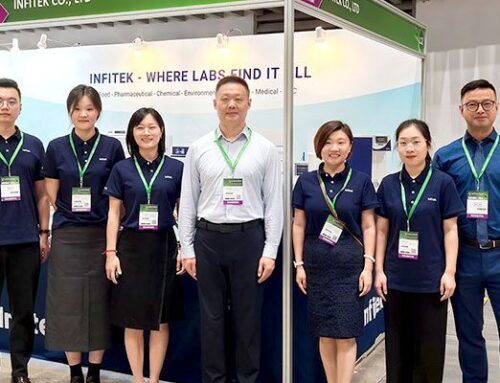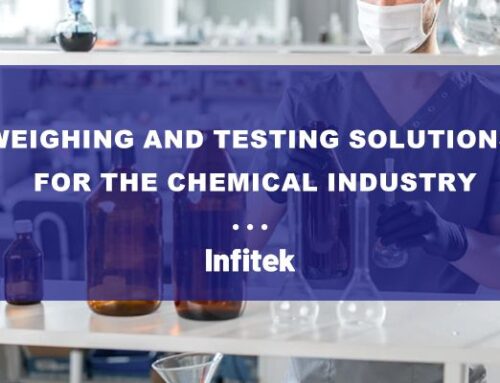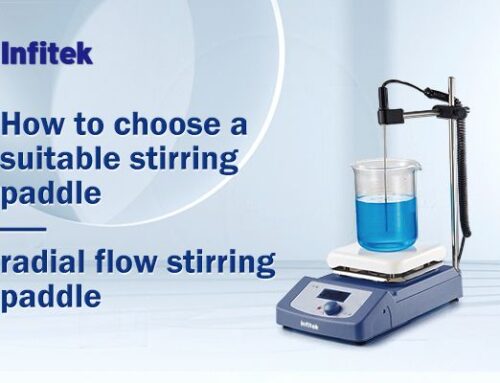Plastic is no longer fantastic. Nadine Bellamy-Thomas looks at how laboratories are adopting more sustainable practices, trending away from single-use plastics, returning to glassware where possible and managing water consumption as standard everyday practice
It is quite amazing how quickly the tide is turning against plastic usage. It’s great to see and it genuinely seems to come from concern for environmental factors…
The benefits which made plastic so attractive as an alternative to glass in the laboratory are still just as present – its durability, cost-effectiveness and convenience – but the evidence of its effect on our planet and wildlife has had stomach-turning consequences which have made plastic consumption a corporate taboo.
In our day-to-day work, account managers and technicians at Miele GB visit and speak with customers and potential customers throughout the UK. As a manufacturer of laboratory, medical and dental washers and disinfectors, the team helps organisations with a wide range of queries, many of which are focused on lab reprocessing guidance. This places us at an early vantage point to observe trends within the laboratory – learning first-hand what is important to researchers and lab managers and what factors are influencing purchase decisions.
Clear sustainability patterns emerging
Very clear patterns are emerging, with laboratories putting sustainability at the top of the agenda – particularly when it comes to plastics. This could have a significant positive impact for the environment, given that bioscientific research is estimated to be responsible for 1.8% of plastic production globally.
1.Organisations are coming under scrutiny to lead the way in ethical plastics usage, with several UK universities setting an example by pledging to go single-use-plastic-free.
2.Key factors in sourcing supplies are moving away from cost and toward eco-credentials.
3.Things really started to change at the time of David Attenborough’s Blue Planet II; the TV series which shone a spotlight on the amount of plastic in the oceans and the devastation it causes to marine life. The week after it aired, our enquiries about washing plastic consumables went up at least tenfold. And that has been a consistent theme ever since. Labs are wanting to use plastic items to the end of their potential lifespan and, while this isn’t always practical, they are saying that even if they can wash their plastics once and get a single extra use from them, it will mean huge savings in the amount of wastage.
Turning the tide on single-use plastics
…many labs are looking to cut down on their purchase of plastic altogether and invest in new glass items which are much easier to reprocess
It is quite amazing how quickly the tide is turning against plastic usage. It’s great to see and it genuinely seems to come from concern for environmental factors rather than saving money.
Labs can commonly own a variety of disposable plastic, for example sample racks, sample pots and pipettes, but many recycling plants won’t accept laboratory plastics given their perceived risk to health and safety.4 There are numerous difficulties presented when faced with the challenge of reusing these items. Plastics can absorb dirt, become unstable in high wash temperatures, and be difficult to dry, so labs are understandably keen to find better solutions.
Before customers invest in a new washer to clean their plastics, they need to be confident that it will do the job they need it to do – which can vary significantly between customers and the work carried out in their labs. We’ve been asked to undertake an increasing number of test washes, which we’ve been carrying out remotely during the pandemic, for labs who want to see if it’s possible to get multiple uses from their plastics. We can experiment on different contaminants and record the results for the customer to review and we’ve been presented with some very interesting challenges.
Significant potential reduction in waste
One customer uses thousands of small plastic bottles to transport oil samples. As you can imagine, this is a very difficult combination to clean. The potential reduction in waste, if these bottles could be used even one additional time, is apparent from the outset.
Another customer was a hospital trust which wanted to reuse plastic racks that hold glass test tubes. They needed to be confident there would be no cross-contamination after the racks were cleaned, but the potential to ultimately save taxpayers’ money as well as reduce the amount of plastic waste they were producing were priorities they wanted to investigate.
Cutting out plastic altogether
In addition to reusing items, many labs are looking to cut down on their purchase of plastic altogether and invest in new glass items which are much easier to reprocess.
We’ve spoken to a lot of labs who are choosing to return to glassware over plastic, par
icularly pharmaceutical companies who are moving away from plastic pipettes and back to glass products. We’ve seen increased demand for products that can wash pipettes specifically. A lot of plastic measuring cylinders are also being replaced with glass counterparts. Items such as these in glass are obviously delicate, but it shows how seriously labs are taking the issue of disposable plastic. They are making significant investments to cut down on plastic use – both in their purchase of equipment and in staff training.
When we’re speaking with labs looking to make the switch, we can reassure them how simple it is to avoid breakages with the correct care and how moving to glassware makes economic sense for a long-term investment, as well as being more eco-friendly to produce. We now proactively ask customers if they’re looking to switch back to glassware over plastic and the majority have plans to do so, so we can help with the transition and advise on how best to prepare for reprocessing of very complex or fragile items, such as viscometers.
Minimising water consumption
Another aspect of sustainability in the forefront of equipment specification is water consumption, particularly given the warning from the Environment Agency that the UK’s demand for water will outstrip supply within 25 years.5
In a bid to help save the country from the “jaws of death” – the words of EA chief executive Sir James Bevan – laboratories are focusing on minimising all water wastage, as well as specifying products which are eco-friendly by design. Historically, it has been mainly universities and public-funded bodies such as the NHS who have been big on the carbon footprint of any product they purchase, as well as the amount of water consumed by a washer. But now, one of the first things we are asked by all our customers is about a washer’s water consumption and that’s a priority factor for our product development team.
It’s important for public funded companies to justify why they have purchased any specific product over another and demonstrate value for money, but increasingly this is becoming more of a priority for private companies too. Water usage is looming as a key environmental issue and businesses are preparing for intense scrutiny from the public and the media alike, similar to the spotlight on plastics. With many laboratories having multiple washers, each of which can be in use up to eight loads every working day, it’s easy to see how water usage can add up and how even small differences can equate to big savings. We meet a lot of customers who had previously washed their glassware by hand, but have realised that machine washing actually uses less water thanks to filtration systems and recycling of rinse water, as well as giving consistent results.
It really does feel like the environment is edging to the top of the corporate agenda and it’s exciting to be at the forefront of those changes.




Get Social